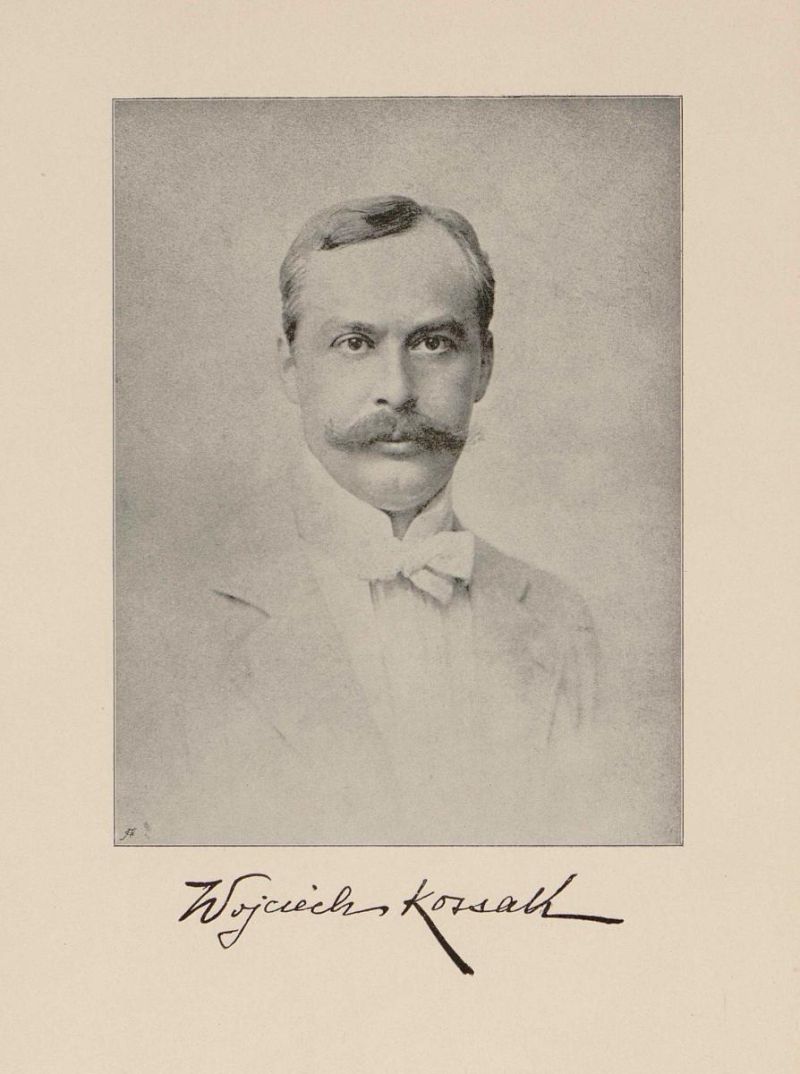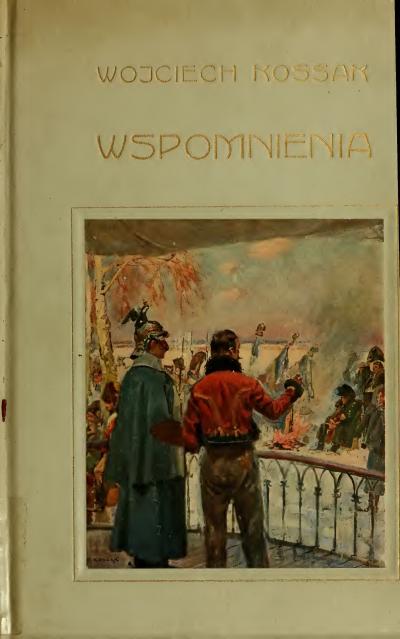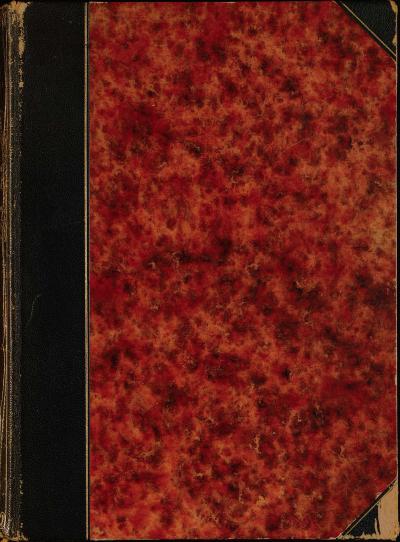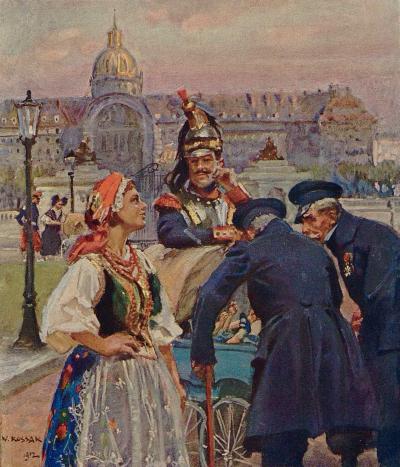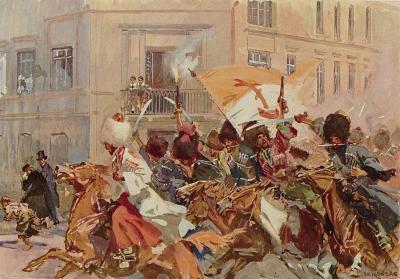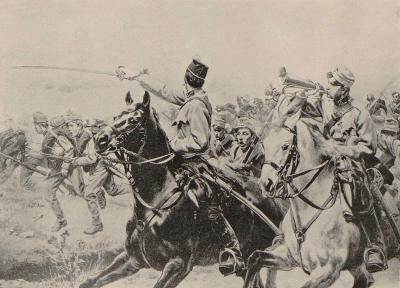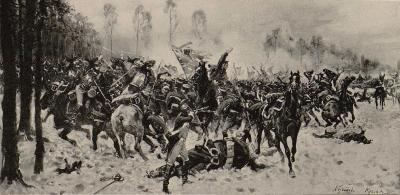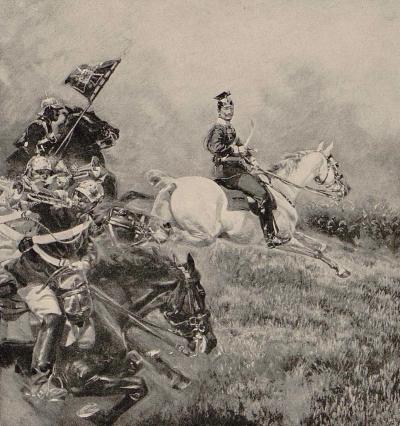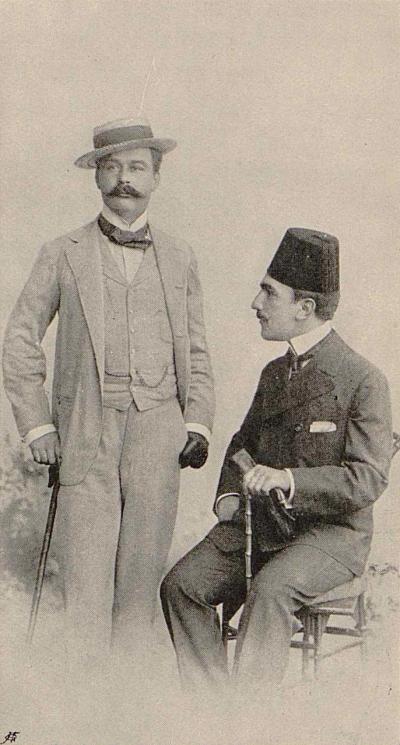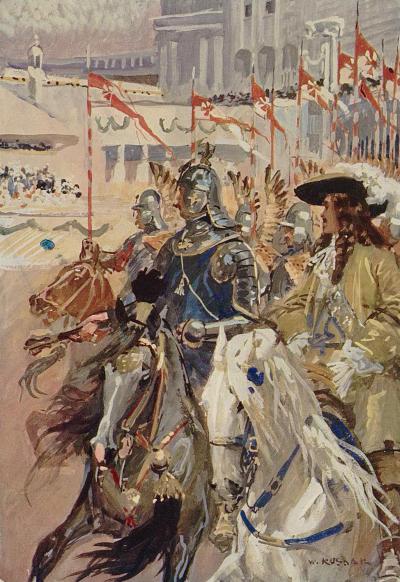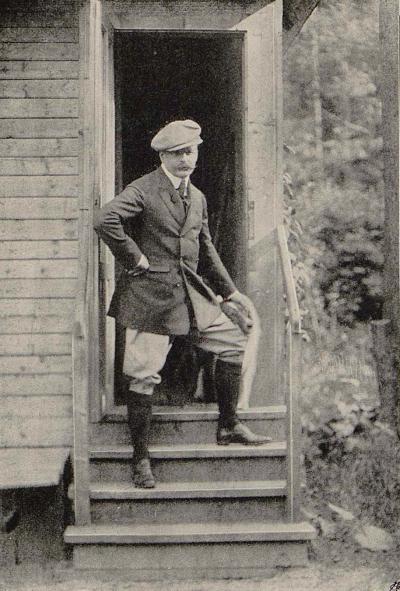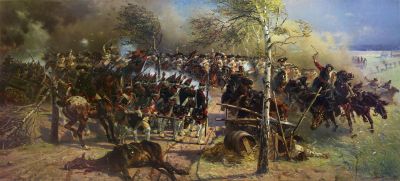Wojciech Kossak: Memoirs, 1913

In the winter of 1895, Fałat suddenly appeared in a gala suit and announced the visit of the imperial couple, who shortly afterwards appeared in the company of officers and court ladies. Kossak, utterly unprepared and clothed in a garment smeared with paint, felt compelled to greet the Emperor and expound on the battle composition (Fig. 4). The latter, obviously impressed by the artistic work, recalled not only a painting by Kossak that he had seen in the art trade, but also his military scene hanging in the Emperor of Austria's Lainzer study. Kossak's controversial opinions on the historical details of the Battle of Beresina and the role of the Polish cavalry corps, which were actually a serious violation of etiquette, were received favourably by the monarch, who thereby acknowledged the artist's honesty.
As a result, the Emperor visited the city more frequently to examine the progress of the panorama painting and finally expressed the wish that Kossak, who intended to return to Poland immediately after completion, stay in Berlin. After the Emperor had talked about the panorama painting at court dinners and diplomatic receptions, visitors from Berlin society and the diplomatic corps crowded into the panorama building. In particular, members of the Austrian, Russian and French legations wanted to find out whether the role of their respective countries in the painting of the battle corresponded with their own ideas (p. 95-108).
Wilhelm II subsequently ordered "a whole series of larger battle compositions" from Kossak on battles between Prussia and France during the Seven Years War and the liberation wars of Prussia and Russia against Napoleonic domination in Europe (p. 108). He received his first commission, a painting depicting Napoleon's victory over the Prussian marshal Gebhard von Blücher and the corps of the Russian general Sachar Olsufiew at Champaubert, (Kossak's later "Battle of Étoges/Bitwa pod Étoges" (1898, Fig. 5)[14], by letter during a family stay in Zakopane, immediately after he had completed the Beresina Panorama. Kossak again returned to the study of historical literature and finally travelled to Paris to cycle from Château-Thierry along the route that Napoleon had travelled some forty kilometres to Étoges, in order to view the scenes of the battle (p. 111). Once Kossak had returned to Berlin to draw a sketch of the painting, he informed the Emperor, who visited the painter in his studio in Charlottenburg alongside the Empress, his younger brother, Prince Henry of Prussia, and his wife, adjutants and court ladies. The party talked not only about the commissioned design, but also about Kossak's completed paintings, which were exhibited in the studio and showed battle scenes between the Polish army and Russian troops during the November Uprising of 1830/31 (p. 114-119).
Kossak does not go any further into other paintings commissioned by Wilhelm II, nor into his monumental painting "The Battle of Zorndorf" (1899), for which he was commissioned in March 1898 while he was still working on the "Battle of Étoges".[15] In order to fulfil the new commissions, the Emperor provided the painter with a studio not far from the city palace, "a magnificent, huge hall in Frederick the Great's palace, 'Monbijou'" (p. 114). Monbijou Castle on the northern bank of the Spree served as the Hohenzollern Museum from 1877. In the following five years, Kossak painted two equestrian portraits of the Emperor and six battle paintings in this studio.[16]
In the section entitled "A Dinner at the Court", Kossak writes that "the Emperor's benevolence and grace grew every week with each new picture painted for him; and his visits to my studio became more and more frequent" (p. 120). The expression of this "benevolence" was an invitation to dinner at the City Palace, where, apart from the imperial couple and Kossak, only court ladies and aides were present. The discussion at the table revolved around the battle painters of the time, Ernest Meissonier (1815-1891) and Adolph von Menzel (1815-1905), who were highly esteemed by the Emperor, and the - in the Emperor's opinion - wrong-headed purchasing policy of the director of the Berlin National Gallery, Hugo von Tschudi (1851-1911), who preferred the French Impressionists, Munch and Hodler (p. 125). In the smoking room, over liqueurs and cigars, Kossak observed the Emperor as an interested and inquisitive conversationalist, who was also able to discuss music in Europe. Finally, he took Kossak on a tour around the "Polish Chambers" in the city palace, which had been created in the 18th century for the stay of the Saxon-Polish kings, Frederick Augustus the Strong and Augustus III (p. 126). Finally, Kossak tells of the evening gatherings of Princess Marie of Radziwiłł (1840-1915), née Comtesse de Castellane, in the palace of her husband, Prince Antoni Wilhelm Radziwiłł (1833-1904), a confidant of Wilhelm I, at Pariser Platz, which were also attended by the Emperor (p. 127 f.).
[14] The painting in Kossak's "Memoirs" called "The Battle of the Forest of Etoges./Odwrót Blüchera po bitwie pod Champaubert (walka o las d'Etoges)“ (Engl: Blücher's Retreat after the Battle of Champaubert [The Battle of the Forest of Etoges]), in other sources as “The Royal Grenadiers at Etoges 1814“ (see below, note 16) was last in private hands and is one of the Polish war losses from the Second World War, http://www.dzielautracone.gov.pl/katalog-strat-wojennych/obiekt/?obid=62858
[15] cf. Axel Feuß: Die Schlacht bei Zorndorf (1758), 1899, page 2, on this portal: https://www.porta-polonica.de/de/atlas-der-erinnerungsorte/wojciech-kos…. The process of creating the painting can be reconstructed from Kossak's almost daily letters to his wife, published by Kazimierz Olszański 1985 (see note 13). Anna Baumgartner evaluated the letters and translated them into German: Wojciech Kossak. Ein polnischer Schlachtenmaler am prußischen Hof in Berlin (1895-1902) zwischen Wilhelminismus, polnischem Patriotismus und dem Aufkommen der Moderne (unpublished Masters dissertation, FU Berlin 2010). See also Anna Baumgartner: Ein polnischer Nationalmaler am Prußischen Hof. Wojciech Kossak und seine wiederentdecktes Gemälde Schlacht bei Zorndorf (1899), in: zeitenblicke 10, Nr. 2, [22.12.2011], http://www.zeitenblicke.de/2011/2/Baumgartner/index_html, notes 5, 7, 20.
[16] Meyer's Großes Konversationslexikon, 6. Auflage, 11. Band, Leipzig/Wien 1905, page 529. The article entitled “Kossak, Adalbert von, poln. Maler”, lists seven paintings: “The Royal Grenadiers at Etoges 1814“, “The Charge of the Gardedukorps Regiment near Zorndorf“, “The 1. Life Hussars near Heilsberg 1807“, “The death of Prince Ludwig Ferdinand at Saalfeld“, “The Life Grenadiers at Château-Thierry“, “The Emperor on horseback in the uniform of the Royal Ulans“, “The Emperor in the Imperial Manoeuvre in West Prussia 1901“ (Online-Ressource: https://archive.org/details/meyersgrosseskon11meye/page/528).

















































































